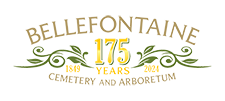Horticulture Supervisor, Kyle Cheesborough




Sir Peter Smithers was many things in his life – lawyer, diplomat, and spy to name a few, but his life’s passion was his garden. Planted in front of his monument at Bellefontaine are two of the peonies he introduced to the horticultural trade, a Dojean peony (Paeonia rockii ‘Dojean’) and a Ambrose Congreve peony (Paeonia rockii ‘Ambrose Congreve’). Sir Smithers was an excellent gardener, known for his expansive horticultural collection at his home in Vico Morcote, Switzerland. He was quoted as saying ‘the pleasure of owning a fine plant was not complete until it had been given to a friend’.


The last black locust (Robinia pseudoacacia), produces a raceme of extremely fragrant, white flowers that bees find irresistible – the resulting honey is incredibly sweet, one of the most sought after types.


The horsechestnut is a large native tree of Europe with dense, palmately-compound foliage and beautiful panicles of white and pink flowers that adorn the entire tree. In the days before refrigeration, this tree was used to shade underground beer cellars, hence the use of the horsechestnut leaf by our local brewery, Urban Chestnut. Unfortunately, in our hot, humid summers, these trees develop a severe leaf-blotch, which will often defoliate the tree. However, the horsechestnut typically rebounds from this by fall, returning to its original majesty.
Compiled by Cara L. Crocker

Post a comment